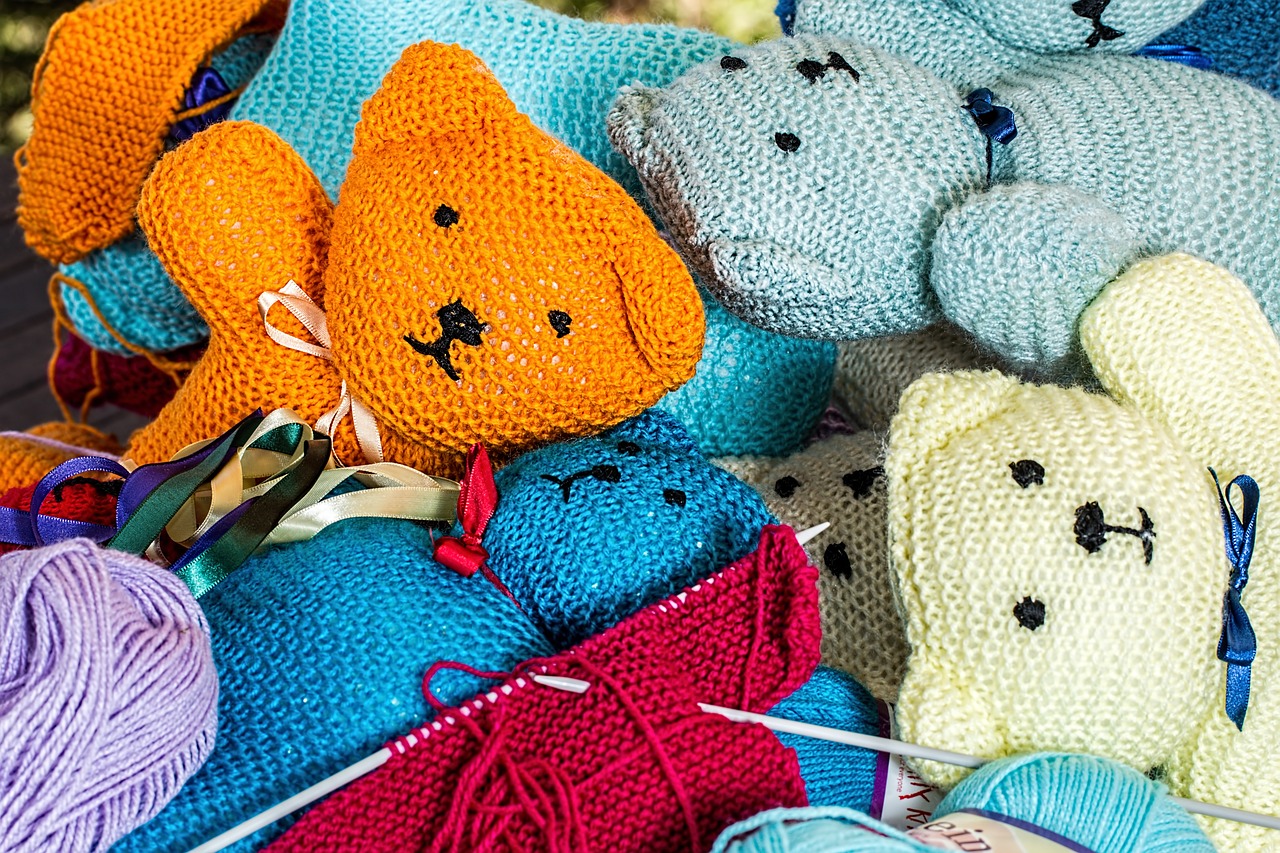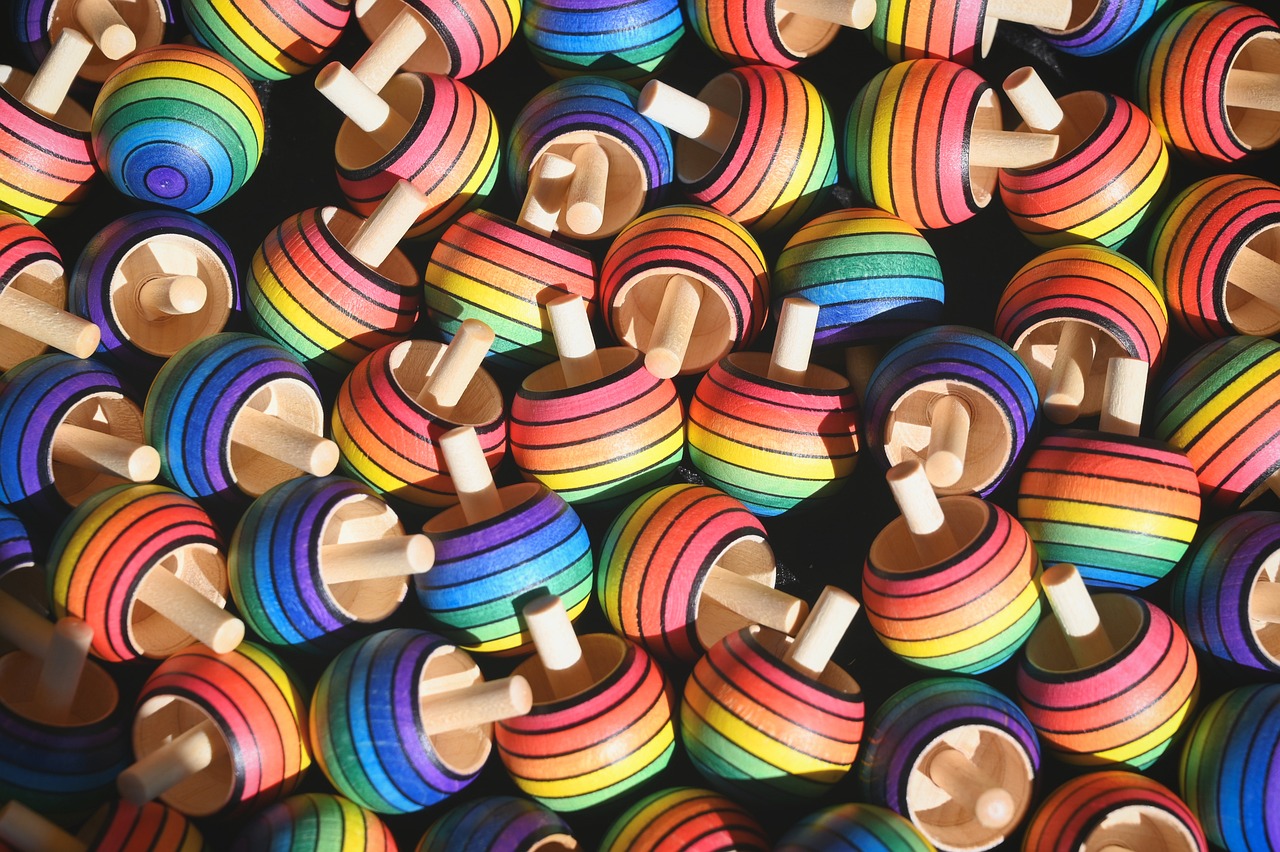Jump Into Adventures: Crafting Wooden Swords and Shields for Kids
Are you ready to embark on a creative journey that will ignite your child's imagination? Crafting wooden swords and shields is not just a fun activity; it’s an adventure that encourages play, creativity, and bonding time. Imagine your little ones wielding their very own handcrafted swords, gallantly defending their kingdom or embarking on quests to save imaginary worlds! This article dives into the exciting process of creating these wooden treasures, offering step-by-step instructions, safety tips, and a plethora of ideas to inspire imaginative play. So, gather your materials, roll up your sleeves, and let's jump into this crafting adventure!
Before we dive into the crafting process, let's gather the essential materials. Having the right tools at hand is crucial for a successful project. Here’s what you’ll need:
- Wood: Choose softwoods like pine or cedar for easy cutting and shaping.
- Tools: A saw (hand saw or jigsaw), sandpaper, and a drill are essential. Safety goggles and gloves are a must!
- Paint and Finishes: Non-toxic paint, brushes, and a sealant to protect the wood.
With these materials, you're all set to start crafting! The excitement builds as you envision the final creations that will soon come to life in your child's hands.
When it comes to crafting with kids, safety is paramount. You want to ensure that the crafting environment is secure and that the tools are used responsibly. Here are some essential safety measures to consider:
- Protective Gear: Always have your child wear safety goggles and gloves while working.
- Supervision: Keep a close eye on children, especially when they are using sharp tools.
- Safe Tool Handling: Teach children how to properly handle tools and emphasize the importance of being cautious.
By prioritizing safety, you create a fun and secure crafting environment where creativity can flourish without worry!
Now comes the fun part—designing the wooden sword! This is where your child’s creativity can truly shine. Encourage them to think about their favorite characters or stories, which can inspire unique designs. Swords can come in various shapes and sizes, from classic knightly swords to whimsical, fantasy-inspired creations. Think about adding decorative elements such as:
- Engravings: Simple designs or initials can personalize the sword.
- Shapes: Experiment with different blade shapes—curved, straight, or even jagged!
- Color: Bright colors or metallic finishes can make the sword stand out.
Let your child sketch out their ideas before you get started. This step not only makes the sword unique but also gives them a sense of ownership over the project.
Once the design is ready, it's time to bring it to life! Begin by carefully cutting the wood according to your child's design. Use a saw appropriate for the child’s age and skill level. After cutting, shaping the sword is next—this is where sandpaper comes into play. Sand down the edges to make them smooth and safe for play. Don't forget to supervise closely to ensure that everything is done safely and correctly. Once shaped, it's time to finish the sword. This can include:
- Painting: Allow your child to paint their creation with the colors they love.
- Sealing: A protective finish will help the sword last longer and withstand the rigors of play.
Crafting is not just about the end product; it’s about the process and the joy it brings!
Just like swords, shields offer a fantastic canvas for creativity. They can be designed in various shapes—round, rectangular, or even themed after favorite characters. Consider some fun designs:
- Round Shields: Perfect for a classic knight look!
- Rectangular Shields: Great for a more modern or superhero vibe.
- Themed Shields: Create shields inspired by dragons, knights, or even superheroes!
Encourage your child to think about how they want to decorate their shield, whether it's painting, adding symbols, or even attaching fabric for a unique look. The possibilities are endless!
Painting and finishing your wooden creations is where the magic really happens! Choose non-toxic paints that are safe for kids. Let your child explore different painting techniques—sponging, brushing, or even splattering paint for a wild effect. Once painted, applying a sealant is crucial to protect the artwork. This will ensure that the swords and shields maintain their vibrant colors and withstand the test of time. Encourage your child to think about how they want their creations to look and feel, making this part of the process as fun as the crafting itself!
Once the swords and shields are complete, it’s time for the real fun to begin! These creations can inspire countless imaginative play scenarios. Imagine your child leading a brave band of warriors on an epic quest, battling dragons, or defending their castle from invaders. Encourage them to create stories around their play, fostering creativity and storytelling skills. Games can range from friendly duels to elaborate role-playing adventures, ensuring hours of engaging fun!
Crafting can be even more enjoyable when shared with friends! Organizing a crafting session can turn this activity into a fun group event. Here are some tips:
- Plan Ahead: Decide on a date and gather all necessary materials beforehand.
- Group Activities: Consider having a theme for the crafting session to spark creativity.
- Encourage Collaboration: Let kids work together on designs and ideas, promoting teamwork.
By organizing a crafting session, you not only foster creativity but also build friendships and create lasting memories!
Q: What age is appropriate for kids to start crafting swords and shields?
A: Generally, children aged 5 and up can participate in crafting with supervision. Younger children can help with painting and decorating.
Q: Can we use recycled materials for crafting?
A: Absolutely! Recycled wood or cardboard can be great alternatives, just ensure they are safe and sturdy enough for play.
Q: How can we ensure the paint is safe for kids?
A: Always choose non-toxic, child-safe paints and finishes. Look for products labeled as safe for children.
Q: What if my child wants to make more intricate designs?
A: For more complex designs, consider assisting them with the cutting and shaping process, while letting them take charge of the painting and decorating.
So, are you ready to craft some incredible wooden swords and shields? Gather your materials, follow these steps, and let the adventures begin!

Materials Needed
When diving into the exciting world of crafting wooden swords and shields, gathering the right materials is absolutely essential. Think of it as preparing for a grand adventure; just like a knight wouldn’t venture into battle without their armor, you shouldn’t start this project without the proper tools and supplies. First and foremost, you'll want to select the right type of wood. Popular choices include pine, known for its lightweight and easy-to-work nature, and birch, which is slightly harder and offers great durability. Each wood type has its own unique characteristics, so consider what suits your child's play style best.
Next, let's talk about the tools you'll need. A basic toolkit for crafting wooden swords and shields should include:
- Saw - A hand saw or jigsaw will work perfectly for cutting your wood into the desired shapes.
- Sanding Block - To smooth out any rough edges and ensure safety during play.
- Drill - Useful for creating holes for handles or decorative elements.
- Paintbrushes - If you plan to paint your creations, a good set of brushes in various sizes is essential.
Don't forget about safety equipment! Protecting little hands is paramount, so ensure you have:
- Safety Goggles - To shield eyes from dust and debris.
- Dust Masks - Especially important if sanding or cutting wood.
- Gloves - To protect hands from splinters and cuts.
Finally, consider any additional decorative materials you might want to include. Think of paints, stickers, or even glitter to add a personal touch to the swords and shields. You could also use fabric or leather for grips and embellishments, making each piece truly one-of-a-kind. Remember, the goal is to inspire creativity and encourage imaginative play, so let your child's personality shine through in their designs!

Safety First
When it comes to crafting wooden swords and shields with kids, safety should always be your top priority. Engaging in creative projects can be thrilling, but it also comes with its own set of risks, especially when tools and materials are involved. To ensure that your crafting experience is not only fun but also safe, it’s essential to establish some ground rules and safety measures. First and foremost, make sure to provide protective gear for everyone involved. This includes safety goggles to protect their eyes from wood shavings and dust, as well as gloves to prevent splinters and cuts.
Another vital aspect of safety is the proper handling of tools. Before you even start crafting, take the time to give a brief demonstration on how to use each tool safely. For instance, if you’re using saws, explain the importance of keeping fingers away from the blade and always cutting away from the body. Kids should also be supervised closely during the entire process. It’s not just about watching; it’s about being actively involved. Ask questions like, “Do you know why we hold the wood steady while cutting?” This helps them understand the importance of focus and caution.
Additionally, it’s wise to set up a designated crafting area that is free from distractions and hazards. This could be a well-lit table in your garage or a spacious area in your backyard. Ensure that the workspace is organized and all tools are stored safely when not in use. Creating a safe environment can significantly reduce the chances of accidents. You might even want to create a simple checklist to go over before starting the project. This could include:
- Wearing protective gear
- Understanding tool safety
- Keeping the workspace tidy
- Having a first aid kit nearby
Lastly, it’s important to remind children that safety is not just about rules; it’s about being responsible and aware of their surroundings. Encourage them to speak up if they feel uncomfortable or unsure about a task. By fostering an environment where safety is prioritized and respected, you’re not only protecting them physically but also empowering them to take ownership of their crafting experience.
Q: What age is appropriate for children to start crafting wooden swords and shields?
A: Generally, children aged 6 and up can begin crafting with supervision. Younger children may participate in simpler tasks.
Q: What tools are safest for children to use?
A: Hand tools such as sanders and small saws are usually safer than power tools. Always supervise their use.
Q: How can I prevent injuries while crafting?
A: Ensure all participants wear protective gear, maintain a clean workspace, and provide clear instructions on tool usage.

Designing Your Sword
Designing a wooden sword is where the magic truly begins! It’s not just about cutting a piece of wood; it’s about unleashing your child’s imagination and allowing them to create something that feels uniquely theirs. Think of this process as crafting a personal emblem of bravery and adventure, much like a knight designing their armor before heading into battle. The beauty of crafting a sword is that it can take on any form your child dreams up! From traditional knightly swords to fantastical shapes inspired by their favorite heroes, the possibilities are endless.
When starting the design process, encourage your child to think about the shape and size of the sword. Do they want a long, elegant sword reminiscent of a fairy tale, or perhaps a stout, chunky one that looks like it could withstand any imaginary battle? Here are a few design ideas to spark inspiration:
- Classic Knight's Sword: A straight blade with a cross-guard and a rounded handle.
- Fantasy Inspired: A sword with a wavy blade or intricate designs etched along its length.
- Wide Blade: A thicker blade that gives a sense of strength and power.
- Short Sword: A compact design that’s perfect for younger children, making it easier to wield.
Now, let's talk about decorative elements. This is where the design can really get personal. Your child can add their name, symbols, or even paint designs that reflect their personality. Encourage them to think about colors and patterns that resonate with them. For example, a bright red sword could symbolize courage, while a blue one might represent calmness and wisdom. Using a simple sketchbook, have them draw out their ideas before moving to the wood. This not only helps visualize the final product but also builds excitement!
Another important aspect of sword design is considering the balance and weight of the sword. A well-balanced sword will feel good in your child’s hands and make their play more enjoyable. You might want to experiment with different lengths and widths, testing each design for comfort. A sword that’s too heavy or awkward can quickly turn imaginative play into frustration.
Once the design is finalized, it’s time to transfer those ideas onto the wooden material. Using a pencil, trace the outline of the sword onto the wood. This step is crucial because it helps ensure accuracy when you start cutting. Remember, this is a collaborative effort, so encourage your child to take the lead in this creative process. After all, this sword will be a reflection of their personality and creativity!
In summary, designing a wooden sword is not just about the final product; it’s about the journey of creativity, imagination, and collaboration. So grab those pencils, sketch out some designs, and get ready to create a masterpiece that will ignite countless adventures!

Crafting Techniques
When it comes to crafting wooden swords and shields, mastering the right techniques can transform simple pieces of wood into magnificent tools of imagination. The beauty of this craft lies not just in the final product, but in the journey of creation itself. So, let’s roll up our sleeves and dive into the essential techniques that will make your crafting experience both enjoyable and rewarding!
First up, you'll want to start with the cutting technique. Using a saw, whether it's a hand saw or a power saw, is crucial for shaping your wood. Make sure to measure twice and cut once! This old adage holds true, especially when you're crafting something that needs to be proportionate and aesthetically pleasing. For instance, if you're making a sword, consider the length and width that will be comfortable for your child to wield. A good rule of thumb is to have the sword reach from the ground to the waist of the child. To help visualize this, here's a quick table:
| Child's Height | Recommended Sword Length |
|---|---|
| 3-4 feet | 2-3 feet |
| 4-5 feet | 3-4 feet |
| 5-6 feet | 4-5 feet |
Once you’ve made your cuts, it’s time to shape your sword or shield. Sanding is an essential part of this process. It not only smooths out rough edges but also prepares the surface for painting later on. Use a variety of sandpaper grits, starting with a coarser grit to remove any major imperfections, then moving to a finer grit for a smooth finish. Remember, patience is key here! Rushing through the sanding process can lead to splinters and an unsightly finish.
Next, let’s talk about creating that unique flair in your designs. This is where the real fun begins! You can use wood carving tools to add decorative elements, such as patterns or initials. If you're feeling adventurous, consider adding a little bit of flair with a wood-burning tool to engrave designs directly onto the surface. Just imagine how proud your child will feel wielding a sword with their name etched into it! However, always supervise this part closely, as wood-burning tools can get very hot.
As you progress, don’t forget about the finishing touches. Applying a protective finish not only enhances the look of your creation but also extends its durability. There are several options available, including varnish, polyurethane, or even natural oils like linseed. Each of these finishes offers a different look and level of protection. If you want a glossy finish, go for varnish; for a more natural look, linseed oil is your best friend. Apply the finish with a brush or cloth, and allow it to dry thoroughly before letting your child play with their new toy.
Lastly, assembling the pieces is where everything comes together. If you’re making a shield, you might want to attach a handle using screws or strong adhesive. For swords, consider adding a grip made from soft materials like foam or fabric to ensure comfort during play. This not only enhances the usability of the sword but also adds an element of safety, preventing slips during those epic battles!
In conclusion, crafting wooden swords and shields is not just about the final product; it’s about the skills you develop along the way. From cutting and shaping to finishing and assembling, each step is an opportunity for creativity and bonding. So gather your materials, unleash your imagination, and get ready for an adventure that goes beyond the crafting table!

Shield Designs
Crafting a shield can be just as thrilling as making a sword! It's not just a piece of wood; it's a canvas for your child's imagination. When designing a shield, the possibilities are endless, and every choice can reflect a unique story or character. Imagine your child wielding a shield that looks like it belongs to a brave knight or a fierce dragon slayer. What a way to ignite their creativity! Let's dive into some exciting shield designs that can inspire your little ones.
First off, consider the different shapes your shield can take. While most people think of the classic round shield, there are numerous styles to explore. Here are a few popular shapes:
- Round Shields: These are great for beginners and can be easily crafted from a circular piece of wood. They offer a classic look and are lightweight, making them easy for kids to handle.
- Rectangular Shields: Perfect for those who want to channel their inner superhero! Rectangular shields can be designed to look like those seen in comic books, providing ample space for colorful designs.
- Heart-Shaped Shields: For a fun twist, why not create a heart-shaped shield? This design can symbolize courage and love, making it a perfect choice for imaginative play.
Next, let’s talk about themed shields. Incorporating themes can make the crafting process even more engaging. Here are some ideas:
- Fantasy Themes: Picture shields adorned with dragons, fairies, or wizards. This can be a fun way to incorporate storytelling into the crafting process.
- Nature-Inspired Designs: Think about shields decorated with leaves, flowers, or animal motifs. This not only adds beauty but can also be a great way to teach kids about nature.
- Historical Designs: Explore various cultures and their shield designs, like the Vikings or ancient Greeks. This could spark a curiosity about history while crafting!
When it comes to size, it's crucial to tailor the shield to your child's age and strength. A larger shield can look impressive but may be challenging for little arms to wield. Conversely, smaller shields are easier to handle but might not have the same visual impact. Aim for a balance that allows your child to feel empowered while ensuring they can easily carry their creation during playtime.
Finally, don’t forget about personalization! Encourage your child to choose colors, patterns, and even add their name or initials to their shield. This not only makes the shield unique but also gives them a sense of ownership and pride in their creation. Whether it’s painting a fierce lion or adding glittery stars, the sky's the limit when it comes to making their shield truly their own!
In conclusion, designing a shield is an adventure in itself. It's an opportunity for creativity, learning, and most importantly, fun! So gather your materials, let the ideas flow, and watch as your child transforms a simple piece of wood into a magnificent shield that sparks hours of imaginative play.

Painting and Finishing
Once you've crafted your wooden swords and shields, it's time to breathe life into them with some vibrant paints and finishes. This stage is where your child's creativity can truly shine! Imagine transforming a plain piece of wood into a dazzling sword that looks like it was forged in the fires of a mythical dragon's lair or a shield that tells tales of ancient battles. The possibilities are endless!
Before diving into the painting process, it's essential to prepare the surface of your wooden creations. Start by sanding the wood to ensure it's smooth and free from splinters. Use a fine-grit sandpaper for the best results. Once sanded, wipe down the surfaces with a damp cloth to remove any dust particles. This step is crucial because a clean surface allows the paint to adhere better, resulting in a more polished finish.
When it comes to choosing paints, opt for non-toxic options that are safe for kids. Acrylic paints are a fantastic choice because they dry quickly and come in a plethora of colors. If you want to add a shiny touch, consider using a clear gloss finish or varnish after the paint has dried. This not only enhances the colors but also provides a protective layer against wear and tear during playtime.
Now, let’s talk about some fun painting techniques! Here are a few ideas to get you started:
- Sponging: Use a sponge to dab on paint for a textured effect.
- Stenciling: Create unique patterns by using stencils. This is particularly fun for kids who enjoy intricate designs.
- Splattering: For a more adventurous look, splatter paint using a brush. Just be sure to cover your workspace!
After painting, allow your creations to dry completely. This might take a few hours, so it’s a great time to grab a snack or plan the next crafting adventure. Once dry, apply a protective finish if desired. This will not only enhance the colors but also make your swords and shields more durable, ensuring they withstand the rigors of imaginative play.
Finally, don't forget to encourage your kids to personalize their creations! They can add stickers, decals, or even their names to make the sword and shield truly one-of-a-kind. The more they invest in the design, the more they'll cherish their creations. So, gather your paints, put on some old clothes, and let the artistic journey begin!
Q: What type of paint is best for wooden swords and shields?
A: Non-toxic acrylic paints are highly recommended due to their quick drying time and vibrant colors.
Q: How can I make the paint last longer?
A: Applying a clear gloss finish or varnish after the paint dries will help protect the artwork and enhance its longevity.
Q: Is it safe for kids to paint?
A: Yes, as long as you use non-toxic paints and supervise the process, painting can be a safe and enjoyable activity for children.
Q: How long should I let the paint dry?
A: Generally, allowing the paint to dry for at least 2-4 hours is advisable, but it’s best to check the manufacturer’s instructions for specific drying times.

Incorporating Play
Once your little adventurers have crafted their very own wooden swords and shields, the real fun begins! These creations are not just for show; they are gateways to a world of imagination and excitement. Think about it: each sword is a key to unlock epic battles against imaginary dragons or to defend a castle from invading knights. The possibilities are as vast as the universe itself!
To truly enhance the play experience, consider organizing themed games or scenarios where children can use their handcrafted items. You might set up a medieval tournament in the backyard, complete with makeshift banners and costumes. Children can take turns being the knight, the dragon, or even the royal court. This not only encourages active engagement but also promotes teamwork and creativity. After all, who wouldn’t want to be the hero of their own story?
Here are some exciting ideas to get those creative juices flowing:
- Treasure Hunts: Hide "treasures" around the yard or house and send the kids on a quest to find them, using their swords and shields for protection against imaginary foes.
- Role-Playing Games: Create characters and storylines where kids can act out their roles, using their swords and shields as props. This can transform a simple playtime into an epic adventure!
- Obstacle Courses: Set up an obstacle course where kids have to navigate through challenges while defending their territory. This can include crawling under tables, jumping over cushions, and dodging soft balls!
Moreover, incorporating storytelling into play can make the experience even richer. Encourage children to narrate their adventures as they play, describing battles, alliances, and quests. This not only enhances their verbal skills but also deepens their engagement with the play. You might even consider documenting their stories in a scrapbook, allowing them to illustrate their epic tales alongside pictures of their creations.
In essence, the swords and shields are more than just toys; they are tools for imaginative exploration. By integrating play into the crafting process, you create a holistic experience that fosters creativity, physical activity, and social interaction. So, gather those little warriors, unleash their creativity, and watch as they embark on countless adventures, all while building memories that will last a lifetime!
| Question | Answer |
|---|---|
| What type of wood is best for crafting swords and shields? | It's best to use lightweight woods such as pine or plywood, which are easier for children to handle. |
| How can I ensure the safety of my child while crafting? | Always supervise children, provide protective gear like goggles and gloves, and ensure they use child-friendly tools. |
| Can we paint the swords and shields after crafting? | Absolutely! Painting adds a personal touch and can make the creations even more exciting. |
| What age is appropriate for kids to start crafting? | Children aged 5 and up can start with supervision. Adjust tasks based on their skill level. |

Organizing Crafting Sessions
Organizing a crafting session can be one of the most rewarding experiences, not just for the kids but for adults too! Imagine the laughter, creativity, and teamwork that will fill the air as everyone gets involved in crafting their very own wooden swords and shields. To kick things off, you’ll want to set a date and time that works for everyone. Consider weekends or school holidays when kids are more likely to be available. It’s like planning a mini adventure where everyone gets to unleash their creativity!
Next, think about the space you’ll need. A garage, backyard, or even a spacious living room can work wonders. Just make sure it’s a place where messes can happen without causing too much stress. After all, crafting can get a little sticky and splattery! Ensure there’s enough room for everyone to spread out comfortably, and don’t forget to lay down some old newspapers or a drop cloth to protect the surfaces.
Now, let’s talk about gathering supplies. Here’s a quick checklist to help you get started:
- Wood (like pine or plywood)
- Tools (saws, sanders, paint brushes)
- Safety gear (goggles, gloves)
- Paint and finishes
- Decorative items (stickers, glitter)
Once you have your supplies, consider how you’ll structure the session. You could start with a brief introduction to the crafting process, explaining what everyone will be making. This could be a fun way to get the kids excited and involved from the get-go! Maybe even show them some examples of swords and shields that you’ve crafted in the past. It’s like giving them a sneak peek into the world of creativity!
Throughout the session, make sure to circulate and offer help where needed. Kids might struggle with certain techniques, and your guidance will be invaluable. Plus, it’s a great opportunity to bond over shared experiences. Encourage them to express their ideas and personalize their creations. After all, each sword and shield should tell a unique story!
Finally, when the crafting is done, set aside some time for a little show-and-tell. Let each child present their creation, explaining the design and what inspired them. This not only boosts their confidence but also fosters a sense of community and appreciation for each other’s work. It’s like a mini exhibition of creativity right in your living room!
In conclusion, organizing a crafting session is all about creating a fun and engaging environment where kids can unleash their creativity. With the right planning and a sprinkle of enthusiasm, you’re sure to host an unforgettable experience that will inspire imaginative play for weeks to come!
Q: What age group is suitable for crafting wooden swords and shields?
A: Generally, children aged 5 and up can participate, but adult supervision is recommended for younger kids, especially when using tools.
Q: How long does a crafting session typically last?
A: Depending on the complexity of the designs, a crafting session can last anywhere from 2 to 4 hours. It’s best to allow for breaks to keep the kids engaged!
Q: Can we use materials other than wood?
A: Absolutely! While wood is traditional, you can also use sturdy cardboard or foam for lighter and safer options, especially for younger children.
Q: What should we do with the leftover materials?
A: Encourage kids to take home any leftover materials for future crafting projects or consider donating them to local schools or community centers.
Frequently Asked Questions
-
What materials do I need to craft wooden swords and shields?
To get started on your crafting adventure, you'll need some basic materials. A good quality wood, such as pine or plywood, is essential for the structure of the sword and shield. Additionally, you'll need tools like a saw, sandpaper, and a drill. Don't forget safety gear, including goggles and gloves, to keep everyone protected while crafting!
-
How can I ensure safety while crafting with kids?
Safety is key when working with children. Always supervise them closely during the crafting process. Equip them with protective gear like goggles and gloves, and teach them how to handle tools safely. Set clear boundaries about where they can work and what tools they can use. Remember, a little preparation goes a long way in keeping everyone safe!
-
Can I personalize the designs of the swords and shields?
Absolutely! Personalization is one of the best parts of crafting. You can create various shapes and sizes for the swords and shields, and even add decorative elements like paint, stickers, or carvings. Let your child's imagination run wild—every creation can be a unique masterpiece!
-
What techniques should I use for cutting and shaping the wood?
When it comes to cutting and shaping, start with a simple design. Use a saw for cutting the wood to the desired shape, then sand the edges to smooth them out. For more intricate designs, you might want to use a jigsaw or a coping saw. Remember to take your time and enjoy the process—crafting is all about having fun!
-
What are some fun ways to incorporate play with the crafted swords and shields?
Once the swords and shields are ready, the real fun begins! Encourage imaginative play by creating themed games or scenarios. You could set up a mock battle, create a treasure hunt, or even act out a favorite story. The possibilities are endless, and these creations will surely spark hours of active engagement!
-
How can I organize a successful crafting session?
Organizing a crafting session can be a blast! Start by gathering your participants and deciding on a date and location. Make sure to prepare all materials in advance and set up a safe crafting space. It’s also a great idea to have some snacks on hand to keep everyone energized. With a little planning, you can create a memorable experience for everyone involved!



















